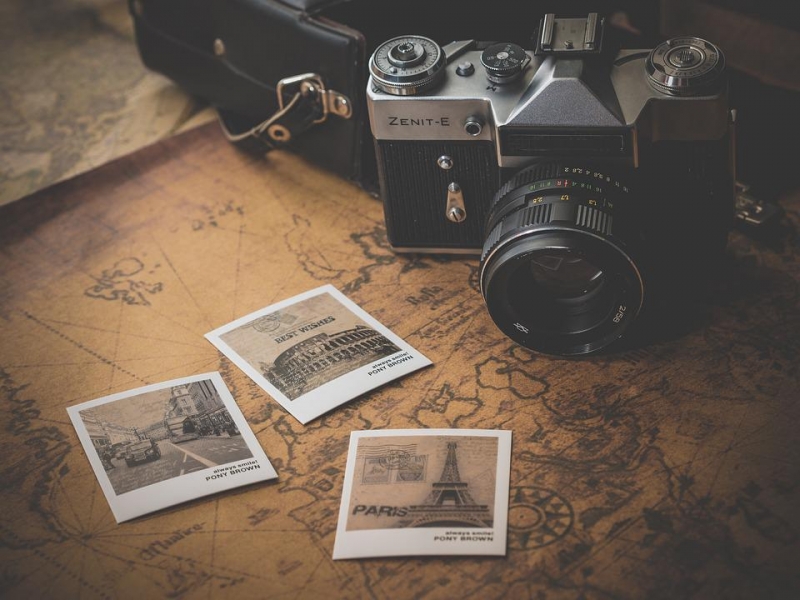Anyone can be a travel writer, including you. Sure, you may be bad at essays and have needed help on some sticky situations but it doesn’t matter. We say emphatically that you can become a travel writer. You can tell vivid stories that will make people go, ‘ You know what, I want to experience what this person experienced.’ Pay attention now. We said stories because, in the end, that’s what travel writing is.

Image credit: DariuszSankowski
You have travelled to different places and experienced their people, culture, architecture, food, and what nature offers. Putting all of those experiences into writing can be challenging. It’s not so much like an essay where you have to rely on facts and figures. It’s your experience. You don’t need to read any bulky, boring textbook. You are the reference point. All the data you need is in your head and in your heart, and you want people to see it. This makes the essay easier, doesn’t it? At least, with essays, you can blame tedious materials.
No one gets travel writing without having help, and this is your help coming to you. In this guide, you will become the Albert Einstein of travel writing. Away we go.
Also read: Important Things to Consider While Travelling Alone Internationally
Tips on how to write about travelling
Read the best travel material

Image credit: Maarten van den Heuvel
It could be a book, a post from a blog or a pamphlet. Just read. You can’t claim to want to transport people into another location with your writing and not read materials that transport you. People don’t say this enough, but the key to improving as a writer is not abiding by the structure of that writing but by reading. When you read, you may not need any formal training on the type of writing you want to do. Your mind absorbs the structure and formatting required unconsciously when you read.
Constant exposure to quality travel writing will allow you to learn words, nuances and techniques you can use to draw a reader in. If you learn about the structure without the skill to show the reader what you want them to see, it’s pointless.
Understand the rules of travel writing
When you read, you unconsciously learn the rules. You can heighten this effect by actually knowing the rules. So, instead of being a feeling, you can solidify it and also make it a fact. That way, the rules stay in your mind as well as your heart. The rules are:
- Tell your story in the past tense
- Tell it in the first person
- Write as if you are seeing the person reading in front of you.
- Attack the senses.
- Let your audience see as well as feel.
- Add a table of content.
- Keep your paragraphs short.
- Bold key sentences
- Use headings and subheadings.
It is important that you follow these customs of writing about travelling. While reading high-grade texts about travelling gives you an edge as you unconsciously learn most of these things. You can add certainty by ensuring you know them to avoid breaking them accidentally or not appreciating their importance enough.
Tell a story

Image credit: Jarritos Mexican Soda
Your trip is just you visiting different places and experiencing new things. It is not a story in itself that people will read. However, you can make a story out of it, even the low points of the journey, such as sitting in the plane in transit or moving to your next tourist destination. It l depends on the story you want to tell; to do that, you have to understand that there are two ways of travel writing.
Commercial type of travel writing. Here, you write your journey as you have experienced it. Your experience is what you are selling here. Your knowledge of how a journey went for you. As we have said, you are selling your experience and try to convince your reader to visit the place you are writing about immediately.
Memoir of a personal essay. Your memoir is like a narrative essay (it turns out you can’t escape essays after all). Here you narrate your experience, but it’s more about you as it is your audience.
Whether a commercial type or a memoir, a story is a story. You still have to be vivid and balance between showing and telling your audience of your experience. You can use ‘tell’ for the places that are less interesting about your journey and show your reader in detail the memorable parts of your travel.
Also read: 11 Money Tips If You’re Not Earning Well Enough to Build a Travel Fund
Start with a bang, finish with a flourish
Start your travel article with a bang and strive to hook the reader. Be dramatic, humourous or do anything as long as the reader goes, ‘oh, this looks fun.’ When you hook them, you can now proceed to tell them the story of their lives. The thing is, even if your story isn’t interesting but you have hooked your reader, they’ll keep on reading. This is where you will hit them with a captivating conclusion.
The resolution of your journey and the overall effect of it in the last paragraph should burn itself into your readers’ minds. You can save your story with a great introduction and a solid conclusion.
Final words
Writing about your travel is like any other art. With constant practice, you will be able to take people across the globe with just your words.




